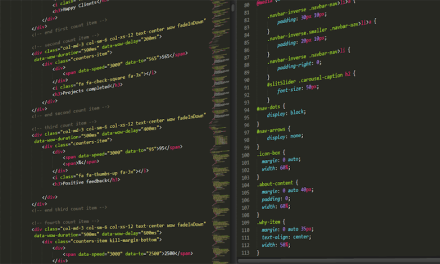Table of Contents
- Introduction
- The Impact of AI and Automation on HR Practices
- Leveraging Data Analytics for Better Decision Making in HR
- The Role of Technology in Employee Engagement and Retention
- Building a Future-Ready Workforce through Upskilling and Reskilling
- Diversity and Inclusion in the Tech Industry
- Ethical Considerations in HR Technology
- The Rise of Remote Work and Virtual Teams
- Enhancing Recruitment Processes with Technology
- Balancing Technology and Human Touch in HR Practices
- Q&A
- Conclusion
“TechHR Singapore 2019: Reflecting on the past, resolving for the future.”
Introduction
Reflections and Resolutions from TechHR Singapore 2019: The TechHR conference in Singapore brought together industry leaders, HR professionals, and technology experts to discuss the latest trends and innovations in the field. As we look back on the insights gained from the event, it is important to reflect on what we have learned and consider how we can apply these lessons to drive positive change in our organizations. Moving forward, we must make resolutions to embrace new technologies, foster a culture of innovation, and prioritize the well-being of our employees in order to stay competitive in the ever-evolving digital landscape.
The Impact of AI and Automation on HR Practices
TechHR Singapore 2019 was a gathering of some of the brightest minds in the field of human resources, all coming together to discuss the latest trends and innovations in the industry. One of the key topics that emerged from the conference was the impact of artificial intelligence (AI) and automation on HR practices. As technology continues to advance at a rapid pace, it is becoming increasingly important for HR professionals to understand how these tools can be leveraged to improve efficiency and effectiveness in their organizations.
One of the main benefits of AI and automation in HR is the ability to streamline repetitive tasks and free up time for more strategic initiatives. For example, AI-powered chatbots can handle routine employee inquiries, freeing up HR professionals to focus on more complex issues. Additionally, automation can help to reduce human error and ensure that processes are carried out consistently and accurately.
However, with these benefits also come challenges. One of the main concerns raised at the conference was the potential for AI and automation to replace human jobs. While it is true that some tasks may be automated, it is important for HR professionals to remember that technology is meant to augment human capabilities, not replace them. By embracing AI and automation, HR professionals can free up time for more meaningful work that requires human judgment and creativity.
Another key takeaway from the conference was the importance of data in driving HR decisions. AI and automation generate vast amounts of data that can be used to inform talent management strategies, improve employee engagement, and drive business outcomes. By leveraging this data effectively, HR professionals can make more informed decisions that are based on evidence rather than intuition.
However, with the power of data comes the responsibility to use it ethically. As AI and automation become more prevalent in HR practices, it is important for organizations to establish clear guidelines for how data should be collected, stored, and used. This includes ensuring that data is secure and protected from unauthorized access, as well as being transparent with employees about how their data is being used.
Overall, the consensus at TechHR Singapore 2019 was that AI and automation have the potential to revolutionize HR practices, but only if they are implemented thoughtfully and ethically. By embracing these technologies and leveraging the power of data, HR professionals can improve efficiency, drive business outcomes, and create a more engaging employee experience.
As we look towards the future, it is clear that AI and automation will continue to play a significant role in shaping the HR landscape. By staying informed about the latest trends and best practices in this area, HR professionals can position themselves as strategic partners within their organizations and drive meaningful change that benefits both employees and the business as a whole.
Leveraging Data Analytics for Better Decision Making in HR
TechHR Singapore 2019 brought together HR professionals from around the world to discuss the latest trends and innovations in the industry. One of the key themes that emerged from the conference was the importance of leveraging data analytics for better decision-making in HR. In today’s fast-paced and competitive business environment, organizations are increasingly turning to data-driven insights to inform their HR strategies and improve overall performance.
Data analytics has the potential to revolutionize the way HR functions operate, providing valuable insights into employee behavior, performance, and engagement. By analyzing data from various sources such as employee surveys, performance reviews, and recruitment metrics, HR professionals can gain a deeper understanding of their workforce and make more informed decisions.
One of the main benefits of using data analytics in HR is the ability to identify trends and patterns that may not be immediately apparent. By analyzing large volumes of data, HR professionals can uncover correlations between different variables and predict future outcomes. For example, data analytics can help identify factors that contribute to employee turnover and develop strategies to retain top talent.
Furthermore, data analytics can also help HR professionals measure the impact of their initiatives and programs. By tracking key performance indicators (KPIs) such as employee engagement, retention rates, and productivity levels, organizations can assess the effectiveness of their HR strategies and make adjustments as needed. This data-driven approach allows HR professionals to demonstrate the value of their efforts and make a stronger case for investment in HR initiatives.
Another important aspect of leveraging data analytics in HR is the ability to personalize employee experiences. By analyzing individual employee data, organizations can tailor their HR programs to meet the specific needs and preferences of each employee. For example, data analytics can help identify training opportunities for employees based on their skills and career goals, leading to higher levels of engagement and job satisfaction.
In addition to improving decision-making and personalizing employee experiences, data analytics can also help organizations stay ahead of the curve in a rapidly changing business environment. By analyzing industry trends and benchmarking against competitors, HR professionals can identify areas for improvement and develop strategies to stay competitive. This proactive approach to HR management can help organizations adapt to changing market conditions and drive long-term success.
Overall, the insights and discussions at TechHR Singapore 2019 highlighted the immense potential of data analytics in HR. By leveraging data-driven insights, organizations can make better decisions, personalize employee experiences, and stay ahead of the competition. As technology continues to evolve and data becomes increasingly important, HR professionals must embrace data analytics as a key tool for driving organizational success.
In conclusion, data analytics has the power to transform HR functions and drive business performance. By harnessing the power of data, organizations can gain valuable insights into their workforce, make more informed decisions, and stay competitive in today’s fast-paced business environment. As we look towards the future of HR, it is clear that data analytics will play a crucial role in shaping the way organizations manage their most valuable asset – their people.
The Role of Technology in Employee Engagement and Retention
TechHR Singapore 2019 brought together industry leaders, HR professionals, and technology experts to discuss the latest trends and innovations in the field of human resources. One of the key topics that emerged from the conference was the role of technology in employee engagement and retention. As organizations continue to prioritize employee satisfaction and retention, technology is playing an increasingly important role in shaping the employee experience.
One of the main takeaways from the conference was the importance of using technology to create a more personalized and engaging employee experience. By leveraging data and analytics, organizations can gain valuable insights into employee preferences and behaviors, allowing them to tailor their HR programs and initiatives to better meet the needs of their workforce. This level of personalization can help employees feel more valued and engaged, ultimately leading to higher levels of job satisfaction and retention.
Another key theme that emerged from the conference was the role of technology in fostering a culture of continuous feedback and communication. Traditional performance reviews are often seen as outdated and ineffective, leading many organizations to adopt more frequent and informal feedback mechanisms. Technology can play a crucial role in facilitating this ongoing dialogue between managers and employees, allowing for real-time feedback and coaching that can help employees grow and develop in their roles.
In addition to fostering a culture of feedback, technology can also play a key role in promoting collaboration and teamwork within organizations. With the rise of remote work and global teams, it is more important than ever for employees to be able to connect and collaborate effectively, regardless of their physical location. Tools such as video conferencing, instant messaging, and project management software can help facilitate communication and collaboration, enabling teams to work together seamlessly and achieve their goals more efficiently.
Furthermore, technology can also play a crucial role in helping organizations identify and address potential retention risks. By analyzing data on employee engagement, performance, and turnover rates, organizations can identify patterns and trends that may indicate a risk of attrition. Armed with this information, HR teams can proactively intervene to address potential issues and prevent valuable employees from leaving the organization.
Overall, the discussions at TechHR Singapore 2019 highlighted the transformative potential of technology in shaping the employee experience and driving engagement and retention. By leveraging data, analytics, and innovative tools, organizations can create a more personalized, collaborative, and feedback-driven work environment that empowers employees to thrive and succeed. As we look towards the future, it is clear that technology will continue to play a central role in shaping the future of work and redefining the employee experience. By embracing these technological advancements and leveraging them to their full potential, organizations can create a workplace that is not only engaging and fulfilling for employees but also conducive to long-term retention and success.
Building a Future-Ready Workforce through Upskilling and Reskilling

TechHR Singapore 2019 brought together industry leaders, HR professionals, and experts to discuss the latest trends and challenges in the ever-evolving world of work. One of the key themes that emerged from the conference was the importance of building a future-ready workforce through upskilling and reskilling. In today’s rapidly changing technological landscape, it is essential for organizations to invest in their employees’ development to ensure they remain competitive and adaptable in the face of digital disruption.
The rapid pace of technological advancement is reshaping the way we work, requiring employees to constantly update their skills to keep up with the demands of the digital economy. As automation and artificial intelligence continue to transform industries, the need for upskilling and reskilling has never been more urgent. Organizations that fail to invest in their employees’ development risk falling behind their competitors and losing their competitive edge in the market.
At TechHR Singapore 2019, speakers emphasized the importance of creating a culture of continuous learning within organizations to foster innovation and growth. By providing employees with opportunities to upskill and reskill, organizations can empower their workforce to adapt to new technologies and stay ahead of the curve. This not only benefits individual employees by enhancing their employability and job satisfaction but also helps organizations build a more agile and resilient workforce that can thrive in the face of change.
One of the key challenges facing organizations today is identifying the skills that will be most in demand in the future and developing strategies to equip their employees with those skills. This requires a proactive approach to workforce planning and development, as well as a willingness to embrace new technologies and learning methodologies. By leveraging data analytics and predictive modeling, organizations can gain insights into future skill requirements and tailor their training programs to meet those needs.
Another important aspect of building a future-ready workforce is fostering a culture of collaboration and knowledge sharing within organizations. By encouraging employees to work together and learn from each other, organizations can create a more dynamic and innovative work environment that promotes continuous learning and growth. This not only helps employees develop new skills and capabilities but also fosters a sense of community and belonging that can boost morale and engagement.
In conclusion, building a future-ready workforce through upskilling and reskilling is essential for organizations to thrive in today’s fast-paced and competitive business environment. By investing in their employees’ development and creating a culture of continuous learning, organizations can ensure they have the skills and capabilities needed to succeed in the digital age. TechHR Singapore 2019 provided valuable insights and best practices for organizations looking to build a more agile and adaptable workforce that can navigate the challenges of the future. As we look ahead to the next wave of technological innovation, it is clear that upskilling and reskilling will be key to unlocking the full potential of our workforce and driving sustainable growth and success.
Diversity and Inclusion in the Tech Industry
TechHR Singapore 2019 brought together industry leaders, innovators, and experts to discuss the latest trends and challenges in the tech industry. One of the key themes that emerged from the conference was the importance of diversity and inclusion in the tech sector. As the industry continues to grow and evolve, it is crucial for companies to prioritize diversity and inclusion in order to drive innovation and create a more inclusive workplace.
One of the main takeaways from TechHR Singapore 2019 was the need for companies to actively work towards creating a more diverse and inclusive workforce. Research has shown that diverse teams are more innovative and creative, leading to better business outcomes. By bringing together individuals from different backgrounds, experiences, and perspectives, companies can foster a culture of creativity and collaboration that drives success.
During the conference, speakers emphasized the importance of creating a culture of inclusion where all employees feel valued and respected. This means not only hiring a diverse workforce, but also creating an environment where everyone feels comfortable sharing their ideas and opinions. Companies that prioritize diversity and inclusion are more likely to attract top talent and retain employees, leading to a more engaged and productive workforce.
In order to promote diversity and inclusion in the tech industry, companies need to take a proactive approach to recruiting and hiring. This means actively seeking out candidates from underrepresented groups, such as women, people of color, and individuals with disabilities. By expanding their talent pool and considering a wider range of candidates, companies can ensure that their workforce reflects the diversity of their customer base and the world at large.
In addition to hiring practices, companies also need to focus on creating a culture of inclusion within their organizations. This means providing training and resources to help employees understand the importance of diversity and inclusion, as well as fostering open and honest communication. By creating a safe and supportive environment for all employees, companies can ensure that everyone feels valued and respected.
Another key aspect of promoting diversity and inclusion in the tech industry is addressing unconscious bias. Research has shown that unconscious bias can impact hiring decisions, performance evaluations, and promotions, leading to a lack of diversity in the workforce. By raising awareness of unconscious bias and providing training to help employees recognize and overcome their biases, companies can create a more inclusive workplace where everyone has an equal opportunity to succeed.
Overall, TechHR Singapore 2019 highlighted the importance of diversity and inclusion in the tech industry. By prioritizing diversity in hiring, creating a culture of inclusion, and addressing unconscious bias, companies can create a more innovative and successful workforce. As the industry continues to evolve, it is crucial for companies to embrace diversity and inclusion as key drivers of success. By working together to create a more inclusive tech industry, we can drive innovation, foster creativity, and build a more equitable future for all.
Ethical Considerations in HR Technology
TechHR Singapore 2019 brought together industry leaders, HR professionals, and technology experts to discuss the latest trends and innovations in the field of human resources. One of the key themes that emerged from the conference was the importance of ethical considerations in HR technology. As organizations increasingly rely on technology to streamline their HR processes, it is crucial to ensure that these tools are used in a way that is fair, transparent, and respectful of employees’ rights.
One of the main ethical considerations in HR technology is the issue of data privacy. With the rise of big data and analytics, organizations have access to more information about their employees than ever before. While this data can be valuable for making informed decisions about recruitment, performance management, and employee development, it also raises concerns about how this information is collected, stored, and used. Organizations must be transparent about the data they collect and ensure that it is used in a way that respects employees’ privacy rights.
Another ethical consideration in HR technology is the potential for bias in algorithms and artificial intelligence systems. These tools are increasingly being used to automate decision-making processes in areas such as recruitment, performance evaluation, and employee engagement. However, if these algorithms are not carefully designed and tested, they can perpetuate existing biases and discrimination. For example, a recruitment algorithm that is trained on historical data may inadvertently favor candidates from certain demographic groups, leading to a lack of diversity in the workforce.
To address these ethical concerns, organizations must take a proactive approach to ensuring that their HR technology is fair and unbiased. This includes conducting regular audits of algorithms and data sources to identify and correct any biases, as well as providing training to HR professionals on how to use these tools in a way that is ethical and respectful of employees’ rights. Additionally, organizations should involve employees in the decision-making process around the implementation of HR technology, to ensure that their concerns and perspectives are taken into account.
At TechHR Singapore 2019, several speakers highlighted the importance of building a culture of ethics and transparency within organizations. This includes creating clear policies and guidelines around the use of HR technology, as well as fostering open communication between HR professionals, employees, and technology vendors. By promoting a culture of ethics and transparency, organizations can build trust with their employees and ensure that their use of technology is aligned with their values and principles.
In conclusion, ethical considerations in HR technology are becoming increasingly important as organizations rely more on technology to manage their workforce. By addressing issues such as data privacy, bias in algorithms, and transparency in decision-making, organizations can ensure that their use of HR technology is fair, respectful, and in line with their values. TechHR Singapore 2019 provided valuable insights and reflections on these ethical considerations, highlighting the need for organizations to prioritize ethics in their use of technology. As we look towards the future of HR technology, it is essential that we continue to prioritize ethics and transparency in order to build a more inclusive and equitable workplace for all.
The Rise of Remote Work and Virtual Teams
TechHR Singapore 2019 brought together industry leaders, HR professionals, and technology experts to discuss the latest trends and innovations in the field of human resources. One of the key topics that emerged from the conference was the rise of remote work and virtual teams. As technology continues to advance and global connectivity increases, more and more companies are embracing remote work as a viable option for their employees.
Remote work offers a number of benefits for both employers and employees. For employers, it can lead to increased productivity, reduced overhead costs, and access to a larger talent pool. For employees, remote work offers greater flexibility, a better work-life balance, and the ability to work from anywhere in the world. As a result, many companies are now offering remote work options to attract and retain top talent.
However, managing remote teams comes with its own set of challenges. Communication can be more difficult when team members are spread out across different locations and time zones. Building trust and fostering a sense of teamwork can also be more challenging when team members don’t have the opportunity to interact face-to-face on a regular basis. As a result, companies are turning to technology to help bridge the gap and facilitate collaboration among remote team members.
One of the key technologies that is enabling the rise of remote work is virtual team collaboration tools. These tools allow team members to communicate, collaborate, and share information in real-time, regardless of where they are located. From video conferencing and instant messaging to project management and file sharing, virtual team collaboration tools are making it easier than ever for remote teams to work together effectively.
Another important aspect of managing remote teams is ensuring that employees have the right skills and resources to be successful in a remote work environment. This includes providing training on how to use virtual team collaboration tools, as well as offering support and guidance on how to stay motivated and productive when working remotely. Companies are also investing in technologies such as virtual reality and augmented reality to create more immersive and engaging remote work experiences for their employees.
As the trend towards remote work continues to grow, it is important for companies to adapt their HR policies and practices to support remote employees. This includes developing remote work policies that outline expectations for communication, collaboration, and performance, as well as providing resources and support for remote employees to help them succeed in their roles. Companies that embrace remote work and virtual teams are likely to see increased employee satisfaction, productivity, and retention rates.
In conclusion, the rise of remote work and virtual teams is transforming the way companies operate and manage their workforce. While there are challenges associated with managing remote teams, the benefits of remote work far outweigh the drawbacks. By leveraging technology and investing in the right tools and resources, companies can create a successful remote work environment that enables employees to thrive and contribute to the success of the organization. As we look towards the future of work, it is clear that remote work will continue to play a key role in shaping the way we work and collaborate.
Enhancing Recruitment Processes with Technology
TechHR Singapore 2019 brought together industry leaders, HR professionals, and technology experts to discuss the latest trends and innovations in the field of human resources. One of the key topics of discussion was how technology can enhance recruitment processes and streamline talent acquisition. In this article, we will explore some of the key takeaways from the event and how organizations can leverage technology to improve their recruitment strategies.
One of the main themes that emerged from TechHR Singapore 2019 was the importance of using data and analytics to make informed recruitment decisions. By leveraging data-driven insights, organizations can better understand their talent needs, identify top candidates, and optimize their recruitment processes. With the help of advanced analytics tools, HR professionals can track key metrics such as time-to-fill, cost-per-hire, and quality-of-hire to measure the effectiveness of their recruitment efforts.
Another key takeaway from the event was the growing role of artificial intelligence (AI) and machine learning in recruitment. AI-powered tools can help automate repetitive tasks, such as resume screening and candidate sourcing, allowing HR professionals to focus on more strategic activities. By using AI to analyze candidate data and predict future hiring trends, organizations can make more informed decisions and improve the overall efficiency of their recruitment processes.
In addition to data and AI, TechHR Singapore 2019 also highlighted the importance of creating a positive candidate experience. In today’s competitive job market, organizations need to differentiate themselves by providing a seamless and personalized recruitment experience for candidates. By leveraging technology such as chatbots, video interviews, and mobile-friendly applications, organizations can engage with candidates more effectively and create a positive impression of their employer brand.
Furthermore, the event emphasized the need for organizations to embrace diversity and inclusion in their recruitment processes. By using technology to remove bias from the hiring process, organizations can ensure that they are attracting and retaining a diverse workforce. Tools such as blind resume screening, AI-powered language analysis, and diversity analytics can help organizations identify and address unconscious biases in their recruitment practices.
As we look towards the future, it is clear that technology will continue to play a crucial role in shaping the recruitment landscape. Organizations that embrace innovation and invest in cutting-edge technologies will be better positioned to attract top talent and drive business success. By leveraging data, AI, and candidate experience tools, organizations can streamline their recruitment processes, improve decision-making, and create a more inclusive workplace.
In conclusion, TechHR Singapore 2019 provided valuable insights into how technology can enhance recruitment processes and drive organizational success. By leveraging data, AI, and candidate experience tools, organizations can improve the efficiency and effectiveness of their recruitment strategies. As we move forward, it is essential for organizations to stay ahead of the curve and embrace the latest technologies to attract, engage, and retain top talent.
Balancing Technology and Human Touch in HR Practices
TechHR Singapore 2019 brought together HR professionals from around the world to discuss the latest trends and innovations in the industry. One of the key themes that emerged from the conference was the importance of balancing technology with the human touch in HR practices. As organizations increasingly rely on technology to streamline their HR processes, it is essential to remember the importance of maintaining a human connection with employees.
One of the main challenges facing HR professionals today is finding the right balance between technology and the human touch. While technology can help automate routine tasks and improve efficiency, it can also lead to a lack of personal interaction with employees. This can have a negative impact on employee engagement and morale, ultimately affecting the overall success of the organization.
At TechHR Singapore 2019, speakers emphasized the need for HR professionals to leverage technology to enhance, rather than replace, the human element in their practices. By using technology to streamline administrative tasks, HR professionals can free up time to focus on building relationships with employees and addressing their individual needs. This can help create a more positive and engaging work environment, leading to higher levels of employee satisfaction and retention.
One of the key takeaways from the conference was the importance of using technology to personalize the employee experience. By leveraging data analytics and AI, HR professionals can gain valuable insights into employee preferences and behaviors, allowing them to tailor their HR practices to meet the unique needs of each individual. This can help create a more personalized and engaging employee experience, leading to higher levels of job satisfaction and productivity.
Another important aspect of balancing technology and the human touch in HR practices is the need for effective communication. In today’s digital age, it is easy for employees to feel disconnected from their organizations. HR professionals must make a conscious effort to communicate regularly with employees, both in person and through digital channels, to ensure that they feel valued and engaged.
At TechHR Singapore 2019, speakers emphasized the importance of using technology to facilitate communication and collaboration among employees. By implementing tools such as chatbots, social intranets, and video conferencing, HR professionals can create a more connected and engaged workforce. This can help foster a sense of community and belonging among employees, leading to higher levels of employee satisfaction and loyalty.
In conclusion, balancing technology with the human touch in HR practices is essential for creating a positive and engaging work environment. By leveraging technology to streamline administrative tasks and personalize the employee experience, HR professionals can create a more personalized and engaging employee experience. By prioritizing effective communication and collaboration, HR professionals can foster a sense of community and belonging among employees, leading to higher levels of employee satisfaction and retention. TechHR Singapore 2019 provided valuable insights and strategies for achieving this balance, and HR professionals must continue to prioritize the human element in their practices to drive success in the digital age.
Q&A
1. What is the importance of reflecting on the past year?
Reflecting on the past year helps individuals and organizations assess their achievements, challenges, and areas for improvement.
2. How can reflection help in setting goals for the future?
Reflection can provide insights into what worked well and what didn’t, helping in setting more realistic and achievable goals for the future.
3. What are some common themes that emerged during the discussions on reflections at TechHR Singapore 2019?
Common themes included the importance of self-awareness, learning from failures, and the need for continuous improvement.
4. Why is it important for organizations to encourage reflection among their employees?
Encouraging reflection can lead to increased employee engagement, productivity, and overall organizational success.
5. How can technology be used to facilitate reflection and goal-setting?
Technology tools such as apps, online platforms, and data analytics can help individuals and organizations track progress, set goals, and measure success.
6. What are some strategies for effectively implementing resolutions in the workplace?
Strategies include setting clear and specific goals, providing support and resources, and regularly reviewing progress and adjusting strategies as needed.
7. How can leaders promote a culture of reflection and resolution within their teams?
Leaders can lead by example, provide opportunities for open communication and feedback, and create a supportive and empowering work environment.
8. What are some potential challenges in maintaining resolutions throughout the year?
Challenges may include lack of motivation, competing priorities, and unforeseen obstacles that may arise.
9. How can individuals stay accountable and motivated to achieve their resolutions?
Individuals can stay accountable by setting milestones, tracking progress, seeking support from peers or mentors, and celebrating small victories along the way.
Conclusion
The conclusion from TechHR Singapore 2019 is that reflections on current practices and resolutions for future improvements are crucial for the advancement of HR technology and practices. The event highlighted the importance of continuous learning, innovation, and collaboration in the ever-evolving field of HR technology. It emphasized the need for HR professionals to reflect on their current strategies and make resolutions to adapt to the changing landscape of work and technology. Overall, TechHR Singapore 2019 provided valuable insights and inspiration for HR professionals to drive positive change in their organizations.





